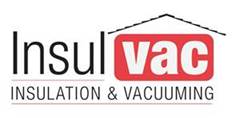Until they began renovating their old terrace house, Rosa and Berto had never given a thought to the space between the ceiling and the roof. But that all changed on the day a tradesman working in the roof accidentally put his foot through the ceiling, sending a shower of dirt and dust into their lounge room.
The problem with dust pouring (or even just leaking) into a house from the roof cavity isn’t just the fact that it’s dirty – it can also be harmful to the health of people living in the house. That’s why anyone who’s considering renovating their house, or who has a damaged ceiling, needs to be aware of this problem.
To understand why ceiling dust can be a hazard, it helps to know where the dust comes from. Some of it is small particles of air pollution which, over the years, sneak in through gaps under eaves and in the roof and gradually build up inside the cavity. Depending on the area in which you live, this pollution can include particles from traffic emissions or from industrial activities like mining, smelting or the manufacture of paint and plastics, for instance, or from pesticide spraying. Other sources of dust can include particles of paint and plaster from renovations in nearby houses, or particles of roofing material such as asbestos cement, slate or fibreglass. If the house has been sprayed to control household pests, there may also be traces of pesticide in the dust.
Contaminants like these can add up to an unhealthy mixture of dust which may contain lead, asbestos and other toxic substances. As long as this dust stays put inside the roof cavity, it’s unlikely to cause problems. When ceilings, ceiling roses and cornices are in good repair, there is no risk from ceiling dust. But if the dust enters living areas during home maintenance jobs or renovations, or because of water damage, or even from small cracks in the ceiling, it can be a health risk. Lead dust, for example, can cause serious health problems, especially for young children and pregnant women. Lead can affect the developing brains of young children and unborn babies, and affect their ability to learn. Ceiling dust can also trigger asthma attacks and cause respiratory problems.
If there’s a chance that dust in your ceiling cavity could be disturbed and leak into your living space, it’s important to get the dust removed. According to the Lead Advisory Service, this needs special equipment and should be done by a professional. In cases where a roof has been affected by storm damage, the cost of dust removal may be covered by insurance. If you’re planning renovations which may disturb ceiling dust, negotiate with the builder or roof repairer to have ceiling dust removed as part of their quote for the work. However, the Lead Advisory Service also points out that because ceiling dust has only recently been recognised as a health risk, the builder may be unaware of it and try to convince you that it’s not a problem.
In that case, you should provide them with factual information from the Service.
